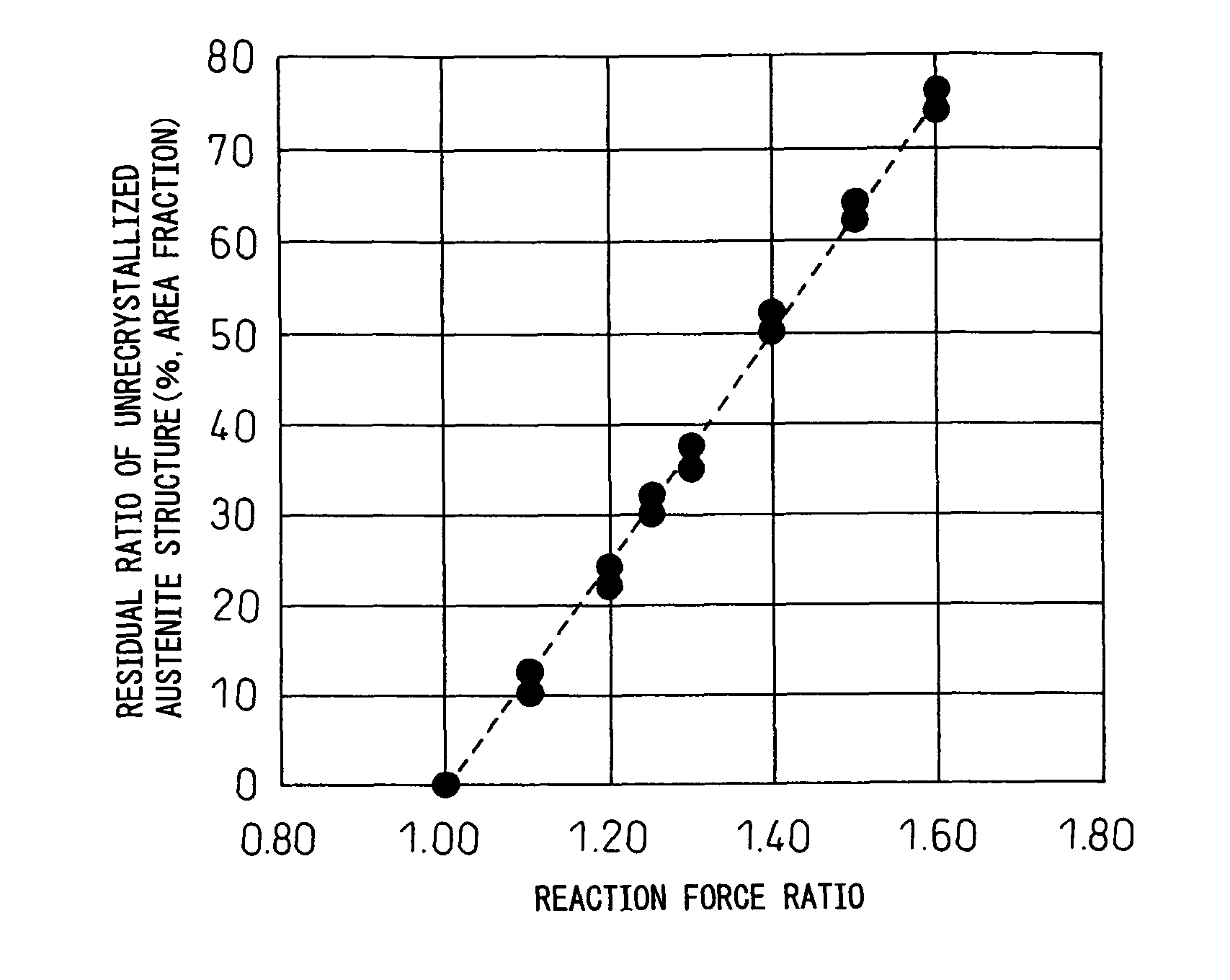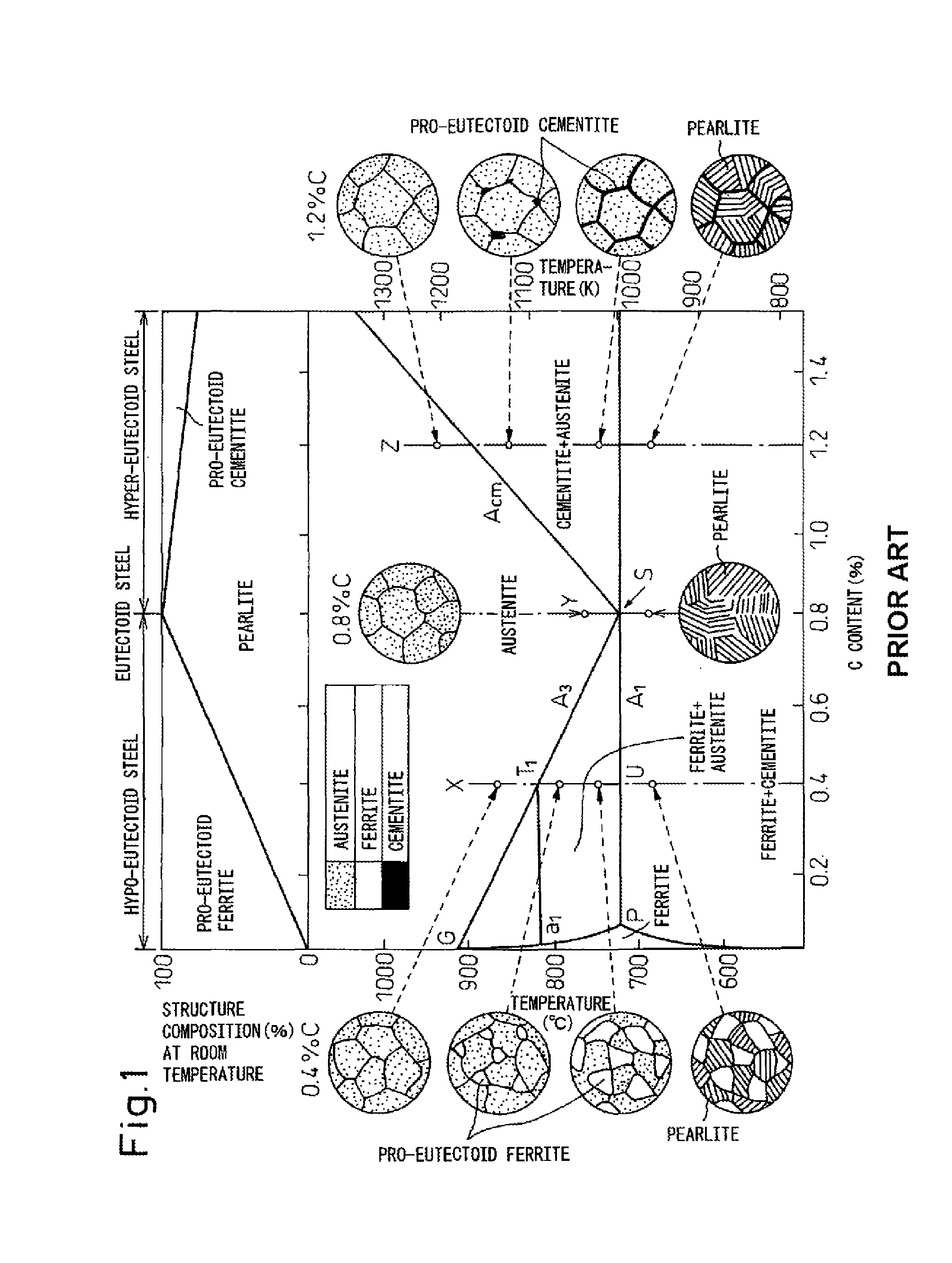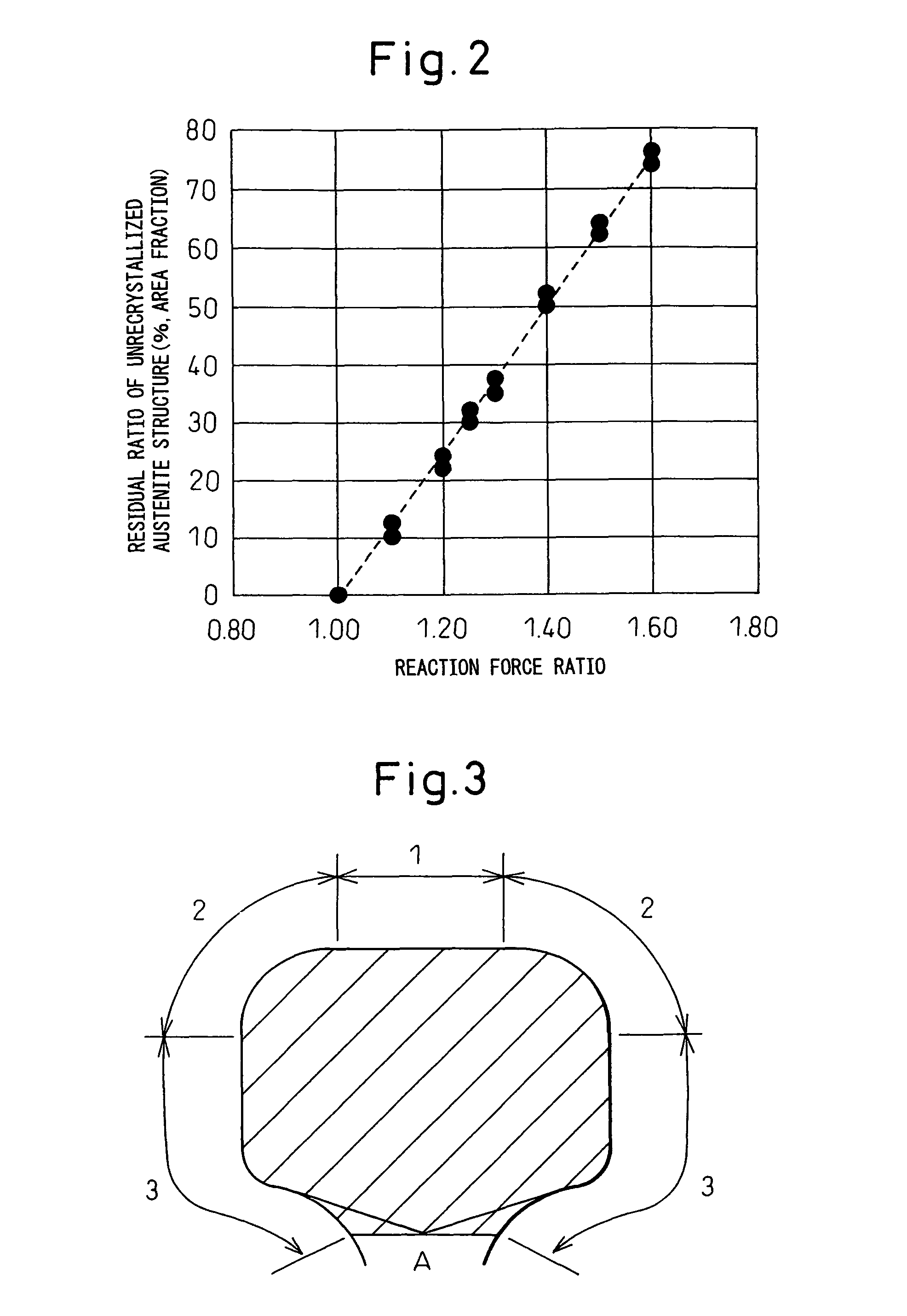Method for producing pearlitic rail excellent in wear resistance and ductility
a technology of pearlite rail and wear resistance, which is applied in the direction of shaping tools, furnaces, heat treatment apparatuses, etc., can solve the problems of increased ductility and toughness decline, increased ductility and toughness, and experience brittle fracture, etc., to improve ductility and toughness, and improve the quality of pearlite. , the effect of excellent wear resistan
- Summary
- Abstract
- Description
- Claims
- Application Information
AI Technical Summary
Benefits of technology
Problems solved by technology
Method used
Image
Examples
examples
[0118]Examples of the present invention are explained in the following.
[0119]The chemical compositions of test rail steels are shown in Table 1. Table 2 shows the finish hot rolling conditions, reaction force ratios, head residual ratios of unrecrystallized austenite structure immediately after hot rolling, and heat treatment conditions when using the test steels shown in Table 1 (Steels: A to J, O and P) to carry out production by the invention rail production method. Table 3 shows the microstructures and hardnesses at 2 mm under the rail head surface of the rails produced under the conditions of Table 2, the total elongations in tensile testing of test pieces thereof taken at the location shown in FIG. 4, and the results of wear testing conducted by the method shown in FIG. 6 on test pieces thereof taken at the location shown in FIG. 5. The numerical values in FIGS. 4 and 5 are expressed in millimeters (mm) In FIG. 6, the reference numerals 4, 5 and 6 designate a rail test piece, ...
PUM
| Property | Measurement | Unit |
|---|---|---|
| temperature | aaaaa | aaaaa |
| temperature | aaaaa | aaaaa |
| temperature | aaaaa | aaaaa |
Abstract
Description
Claims
Application Information
 Login to View More
Login to View More - R&D
- Intellectual Property
- Life Sciences
- Materials
- Tech Scout
- Unparalleled Data Quality
- Higher Quality Content
- 60% Fewer Hallucinations
Browse by: Latest US Patents, China's latest patents, Technical Efficacy Thesaurus, Application Domain, Technology Topic, Popular Technical Reports.
© 2025 PatSnap. All rights reserved.Legal|Privacy policy|Modern Slavery Act Transparency Statement|Sitemap|About US| Contact US: help@patsnap.com



